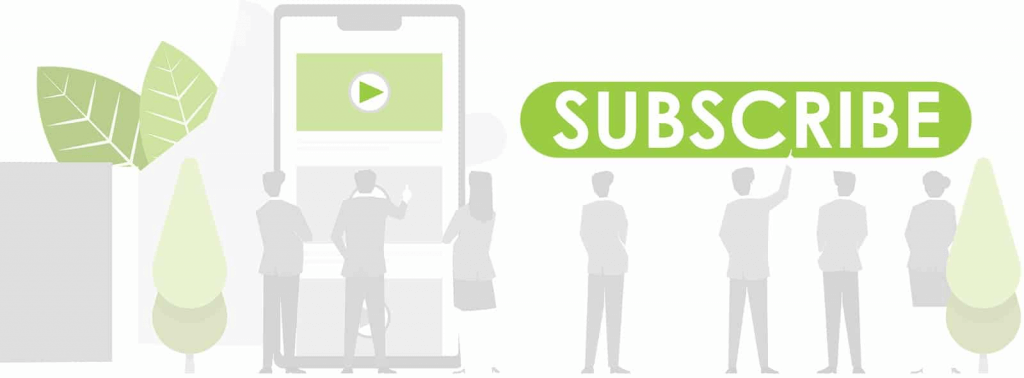YouTube is an incredibly powerful way to reach your target audience and drive revenue—but are you unwittingly sabotaging your campaigns before they have a chance at success?
In this video, John shares some surprisingly simple tips that will help you optimize your YouTube Ads for maximum performance. In fact, in his words, “When you run YouTube ads this way, you will succeed.”
Table of Contents
- First things first: cost
- The mistake most agencies make
- A word about ad spend
- Also important? The type of conversions you’re tracking.
- Major takeaways
- Don’t stop three feet from gold
So, let’s get started! We’ve summarized his key points in this blog to help you understand:




First things first: cost.
YouTube is a very expensive network in terms of the time it takes to achieve a goal, says John. However, when it gets up and running? It is a powerhouse.
At the beginning of the video, he uses a YouTube shorts campaign as an example. These are short snippets that give a top-of-funnel offer to an audience, and they work very well.
John says the first thing you want to do is make sure your Conversion Action is set to Engaged View Conversion, and he recommends setting the Engage View Conversion window to 30 days.
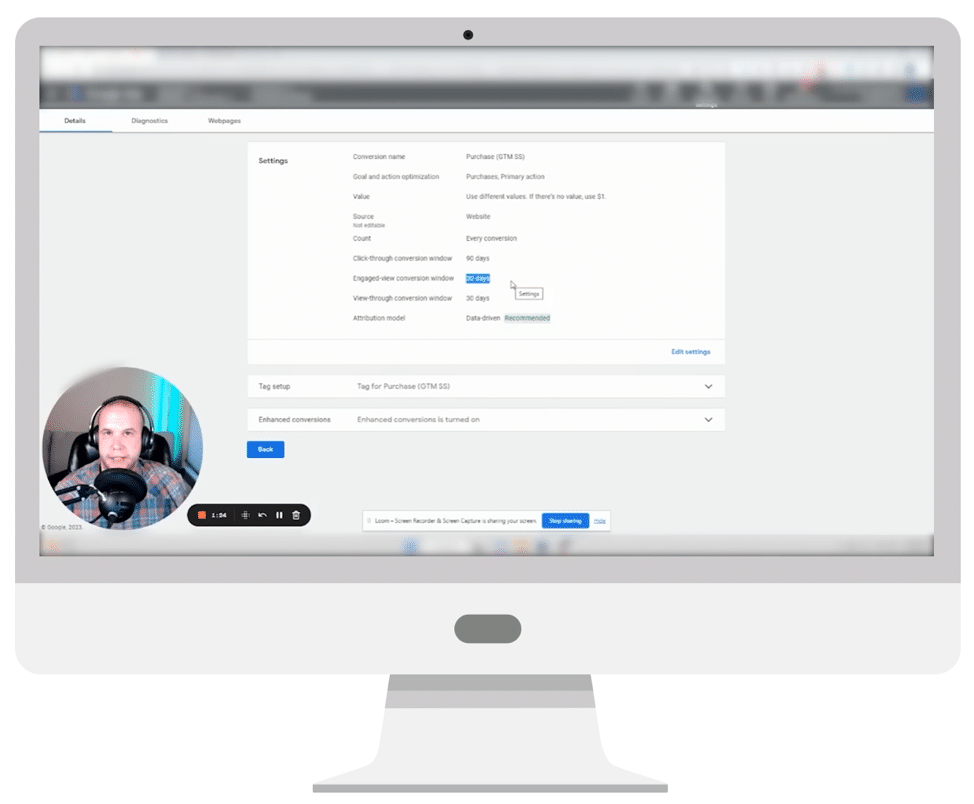
What this does is allow you to see the people who watched an ad for longer than 10 seconds but did not click on it—but still converted within the conversion window (30 days).
Long attribution is important, says John, because the more attribution you give Google, the more it sees, and the more it can optimize.
In fact, there’s really no reason not to give Google a long conversion window. It is paramount to the success of any campaign in Google, he adds, because Google is a self-learning algorithm and this is how you teach it.
Basically, you’re warming up Google.
(John gives a great client example of this in the video; you can follow along starting at 4:02.)
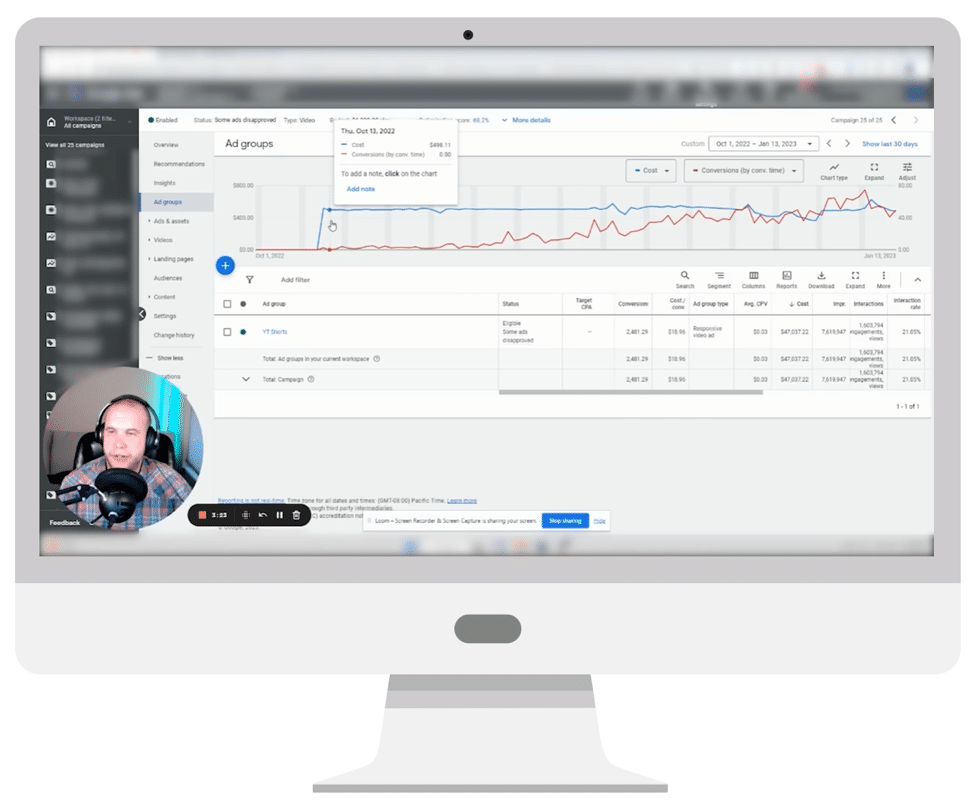
The mistake most agencies make.
When running ads on YouTube, John recommends a custom mix, because the more signals you can give a YouTube campaign, the better. But… (yep, there’s always a “but”) one important tip he shares is that you don’t necessarily have to have 10 or 15 ever-changing ads.
“That’s the mistake I see most agencies make,” he says. “They will take five ads, run it for a week, and then change it again. Don’t do that.”
Why is this wrong? Because, explains John, you’re resetting the learning in that algorithm. It needs time to grow, identify those audiences, and start to optimize the targeting of those audiences and move in—which is why touching your campaigns less is the way to go.
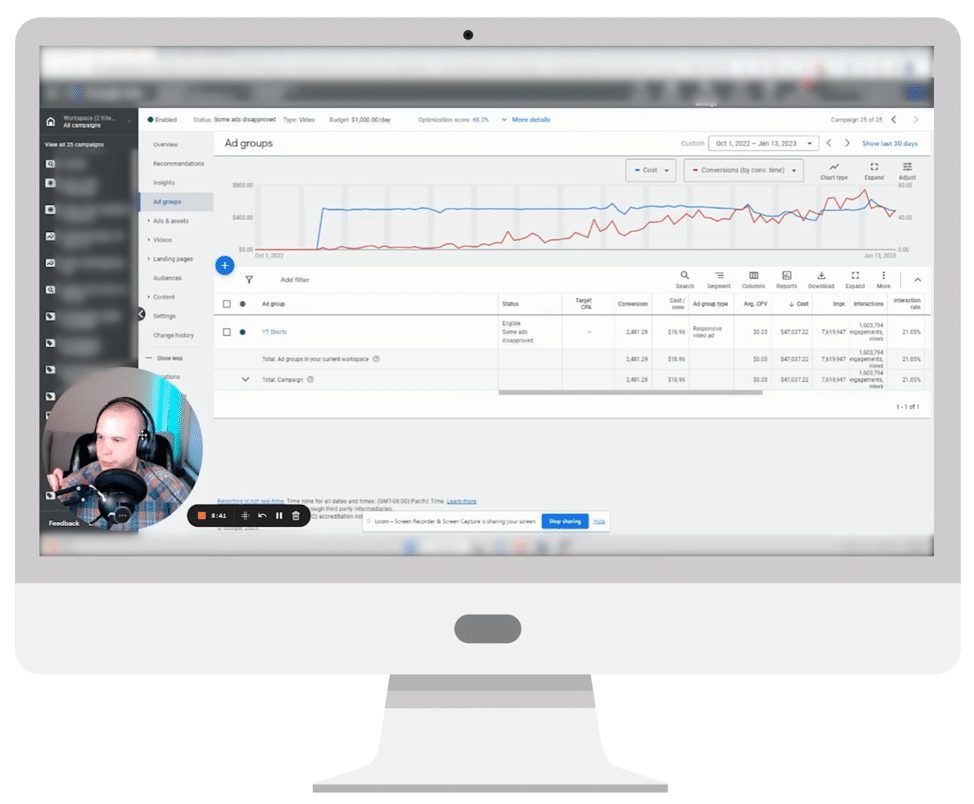
In the example he provides in the video, he shows that the campaign was GROWING without being touched. He goes on to explain that it is not a bad thing if your Google Ads team leaves your campaign alone for a bit, and that going in and pressing random buttons for the sake of pressing buttons is extremely detrimental.
“There are very specific reasons why we don’t touch things on purpose. The key is to set it up correctly the first time and just give it time.”
A word about ad spend.
Another important tip?
You don’t want to change the daily ad spend too much. You need to simply give it time. (Noticing a pattern here?)
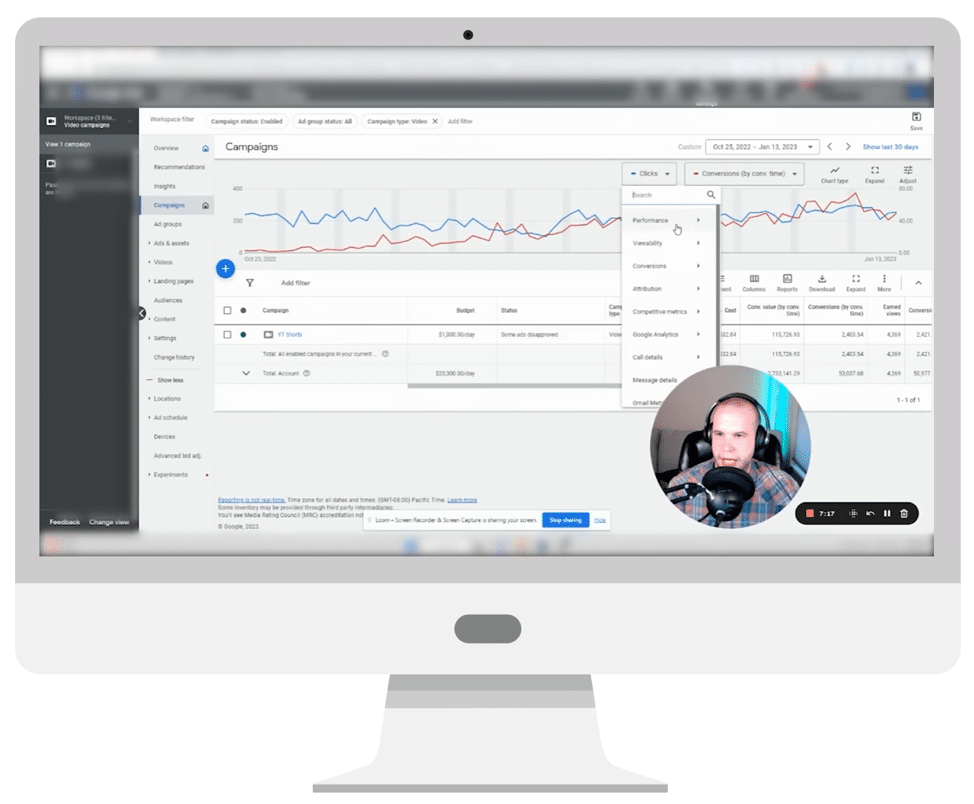
John explains that if you start to reduce or increase cost, you’re telling the algorithm to learn slower or faster, and this starts the learning process all over again.
Whereas, if you keep the cost consistent, you will yield consistent results. Makes sense, right? He goes on to say that there are two ways to measure Google:
- Conversions: What was the action taken that ultimately led to a conversion—but given back to the last point of the action?
- Converted by Conversion Time: When did the user actually convert?
So, Conversions may give it back to the click on day one, while Converted by Conversion Time might be day 7 when the user actually bought.
The thing to remember is that Google is going to optimize the same amount for the same activity over a given period of time, but the speed is dependent upon ad spend. In other words, you will still get the same amount of views, clicks, etc. but just 4X slower at $500/day compared to $2,000/day.
John’s advice? Give it time, give it the right audiences, and leave it to its own devices.
He uses a client example of two videos, both YouTube shorts, that went from two conversions up to 74 just by giving it time.
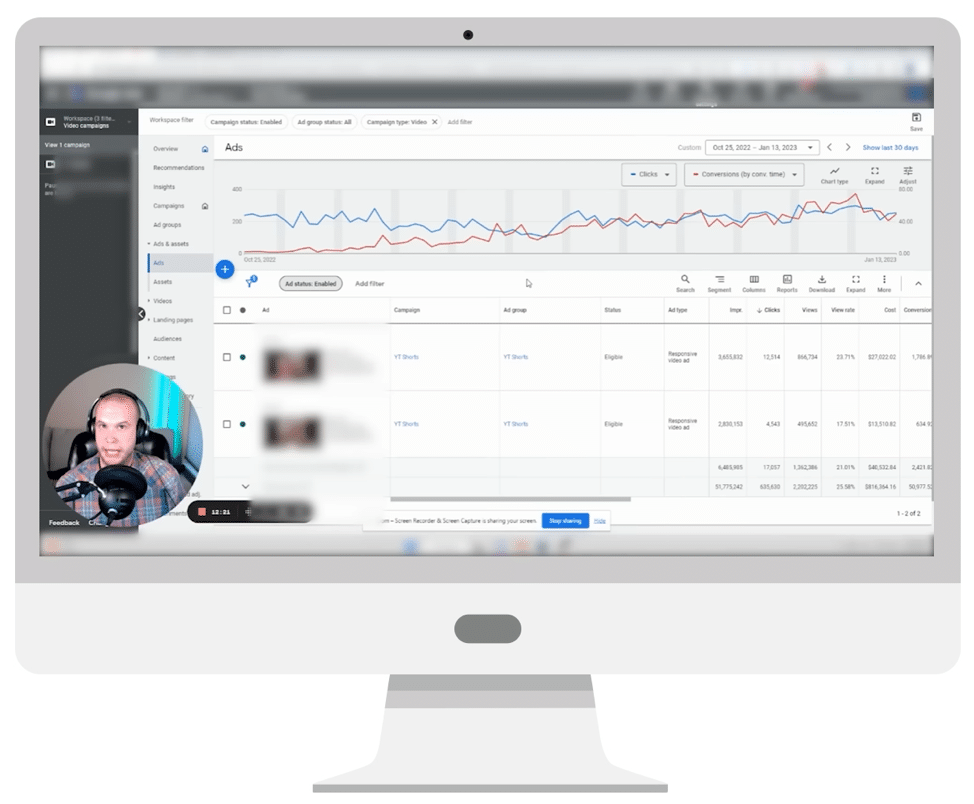
“Spending $7,600 to make $29,000, that’s a really good return,” shares John. “If I was going to make a change to this I would simply just add more videos. Google found something it likes and it’s gonna scale this thing to the moon. It’s good to see how this works.”
Also important? The type of conversions you're tracking.
This is the important part, says John.
Remember at the beginning when we talked about Engaged View Conversion? That’s a big factor here.
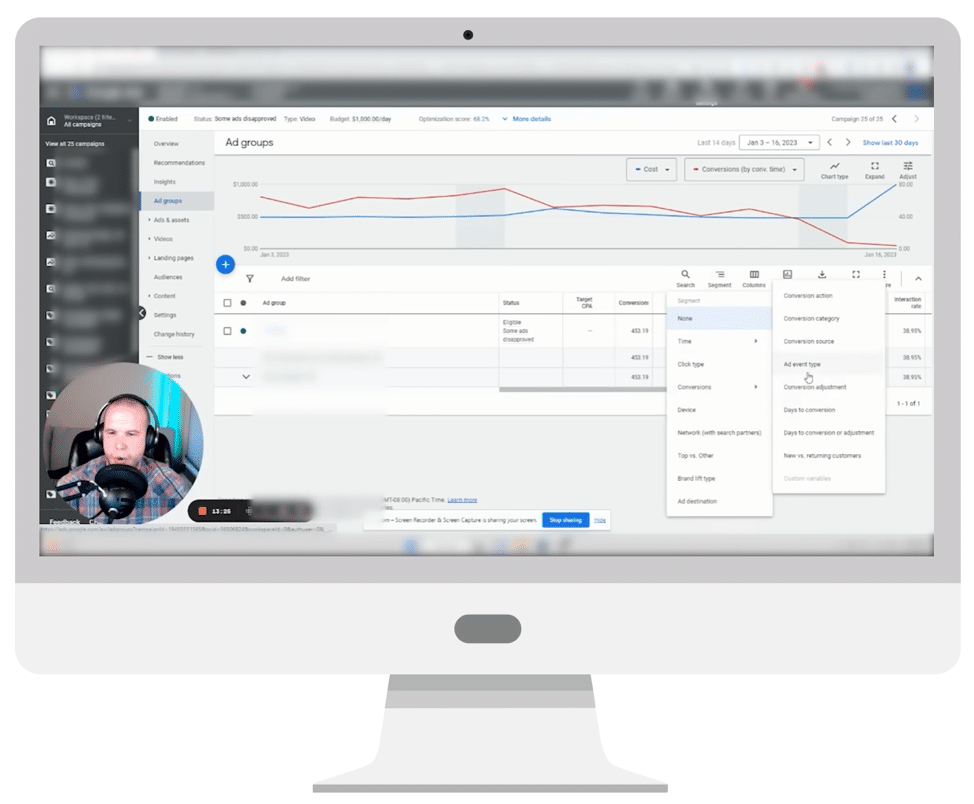
The first thing you want to do is identify what’s going on. To do this, go into Segment, then go into Conversions, and then go into Ad Event Type. This tells you two things:
- What are the conversions coming in from Clicks?
- What are the conversions coming in from Engaged Views?
Remember, Engaged Views are different; it means they watched the video for longer than 10 seconds and did not skip the ad and then ultimately, within the time frame window, converted without clicking on it.
People watch YouTube shorts but don’t click on them, shares John. But they work, because people’s buying habits haven’t changed. His advice? Measure accordingly. He tells you exactly what to look for in the client example.
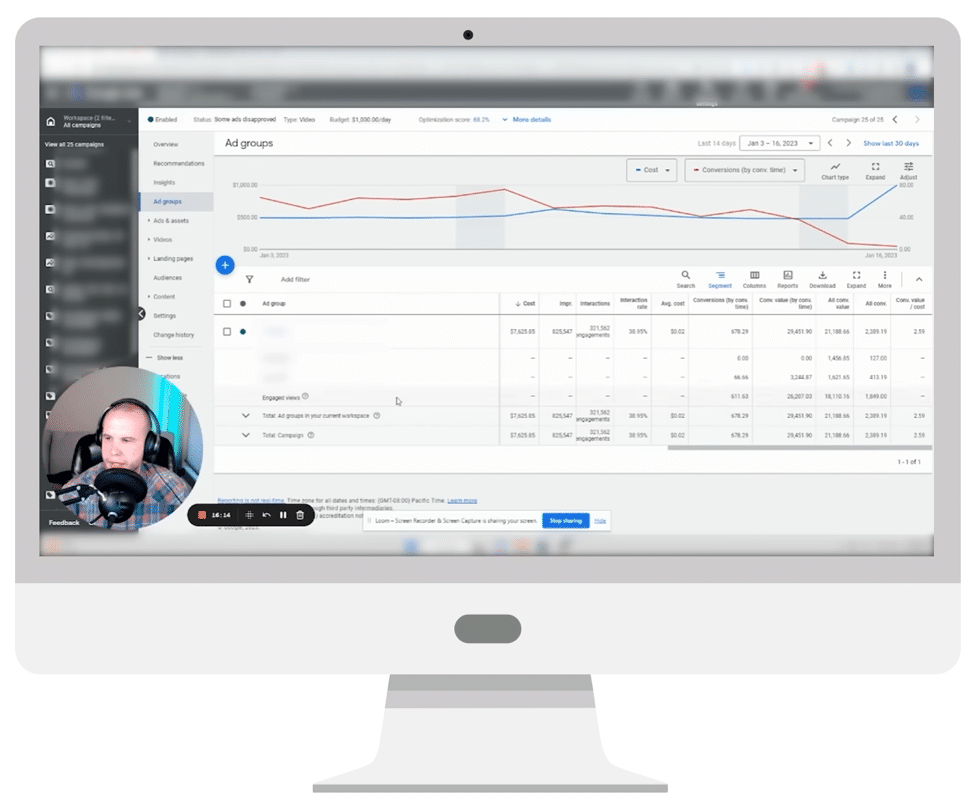
Major takeaways.
First, give the algorithm enough time and ad spend to do its job.
A three-month time period is a fairly good test, says John, especially if you have a lower daily ad spend (e.g., $200-$300/day). He recommends against running ads under $100/day if you’re not going to give it six months to a year.
Second, make sure you have a good enough video.
You don’t need to break the bank or even pay to have something professionally made. You just need a video that is engaging and that will resonate with your target audience. The length doesn’t matter either, unless it’s a YouTube short (under a minute).
Always look for your initial key indicators.
Briefly, John explains that a click-through rate (CTR) above a half percent is a really good indicator. Likewise, view rates above 22% is another really good indicator.
Don't stop three feet from gold.
When you run YT ads this way, they will succeed.
However, as John explains, a vast majority of people stop three feet from gold—meaning they are *this* close to success but sabotage their own campaigns due to a lack of understanding.
Just follow John’s advice and you’ll be golden!
Author
Pamela is the Senior Content Writer at Solutions 8. When she's not writing, you can find her hiking in the woods with her dogs. She is currently on a quest to visit every national park in the United States.
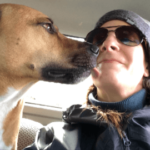 Pamela Sapio
Pamela Sapio